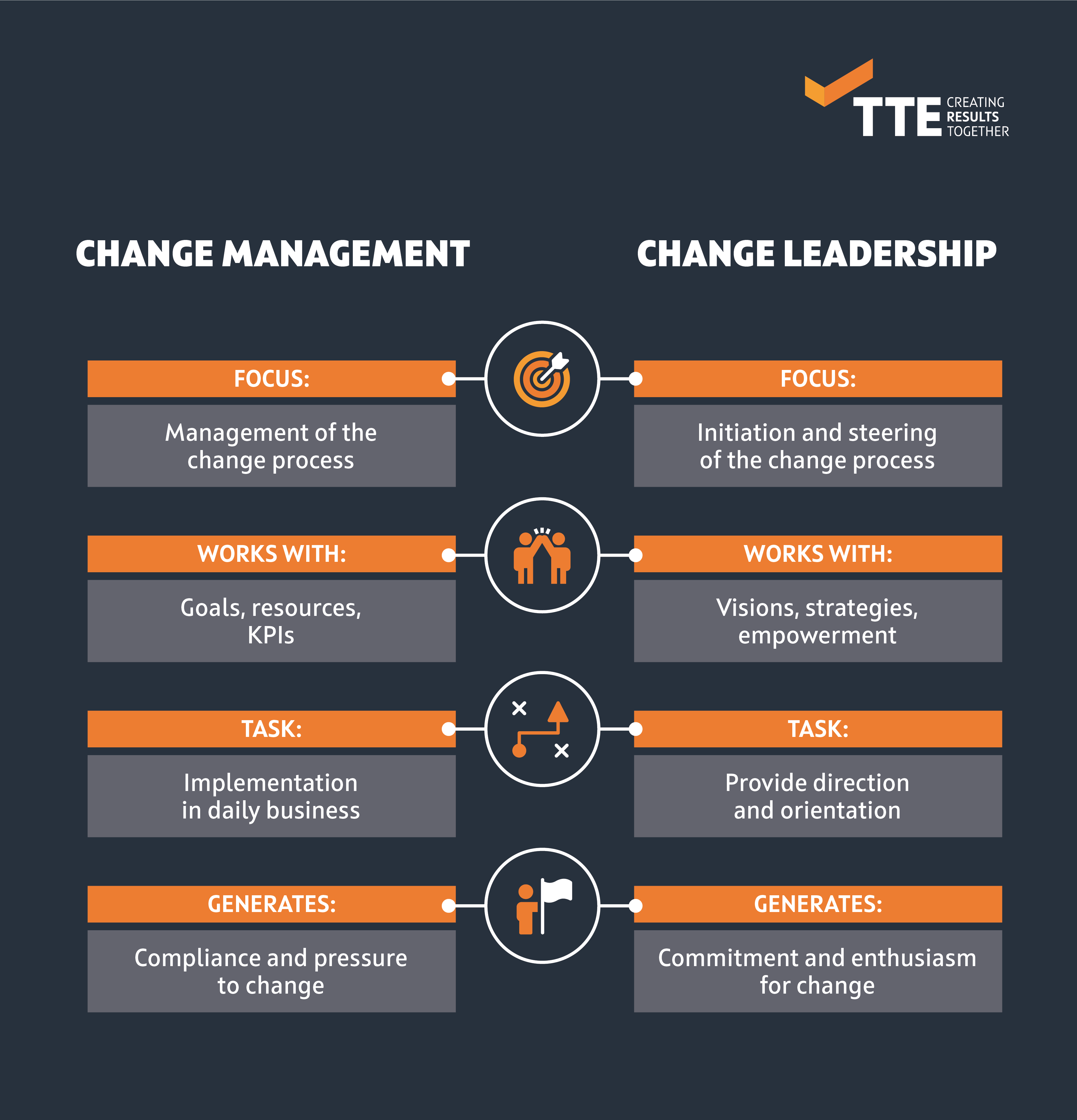
We are in the midst of times of great change. It goes without saying that transformation processes such as digitalization do not simply happen by themselves, but rather require active measures. There’s hardly a company out there where structures are not questioned, measures developed and processes analyzed. At first glance, it seems as if companies are well equipped for the digital future thanks to change management.
Reality, however, tells a different story. Half of all change processes fail. This is the conclusion that Gartner comes to in a study, and numerous other studies reach similar conclusions.
50 percent is a shockingly high figure. Instead of asking “Why do change processes fail so often?”, we want to turn the question around: What did 50 percent of successful companies do right? What makes change processes successful?
Our thesis: Companies with change competency rely not only on change management, but also on change leadership!
The role of a change manager is crucial to success, but they need support – ideally from the top management level in your company. As a change leader, the CEO should steer the change agenda in order to keep the project on track, especially in difficult phases of a transformation project. In this respect, change management and change leadership are essentially concerned with the same issue. However, each role with its respective tasks pursues different approaches and objectives.

Change management is important and valuable for every change process. However, it is only one side of the coin. Managers that want to steer their company safely into a new era need both: a sound leadership mindset as well as good management skills. The former will set the company’s strategic direction, while the latter will enable individual measures to be put into practice.
For all the importance of technology and structure, in the end it is people who shape and stimulate change processes. It is leaders who initiate change and implement it together with their employees.
Successful change processes require inspiring, competent change leaders - and in this blog post we look at their most important characteristics.
Not every manager is automatically a good change leader. These five characteristics are essential for leaders in change processes:
Gandhi once said: “Be the change you want to see.” Those who take this to heart have already understood the most important thing about change processes.
First of all, deal with your own obstacles and issues until you are sure that you have made the desired changes in yourself. The effects are as follows:
Make sure that you have all the managers in your company on board. They should be convinced of both the necessity and usefulness of the change project before you implement company-wide measures.
Everything stands and falls with the ability of the senior management to create a glowing vision, to communicate it effectively and to bring all employees together to support it.
Examples of great leadership personalities show that this competence is partly innate, but can also be learned to a large extent (e.g. in coaching sessions). As a change leader, it is your task to:
Enthusiasm is one thing; what a change leader generates over the long term is commitment. Those that commit to something and consider it to be true, good and important at their very core no longer need motivation. That’s why commitment is much more effective than an impending termination or a flashy bonus. Please note:
A change leader has many roles: smart strategist, steadfast leader, but also coach at eye level. Sound impossible? Not if you consider the following points:
Accompanying your employees in their day-to-day lives gives you another decisive advantage: you always stay up to date, are aware of changes in atmosphere and can experience and counter stagnation or even relapses into old patterns.
As both the designer and driving force behind a change process, you need resilience, goal orientation and stamina. It is quite possible that your project will always feel like the famous “two steps forward and three steps back”. It is important, however, that you don’t get discouraged.
Successful leadership is an art, especially in times of change. Digital transformation is THE central challenge of change management today. Is your boardroom sufficiently prepared for this?
We would be happy to talk to you about how you can promote the necessary leadership qualities in your team to ensure you are among the 50 percent of companies that successfully implement their change process. Get in touch!


TTE Strategy